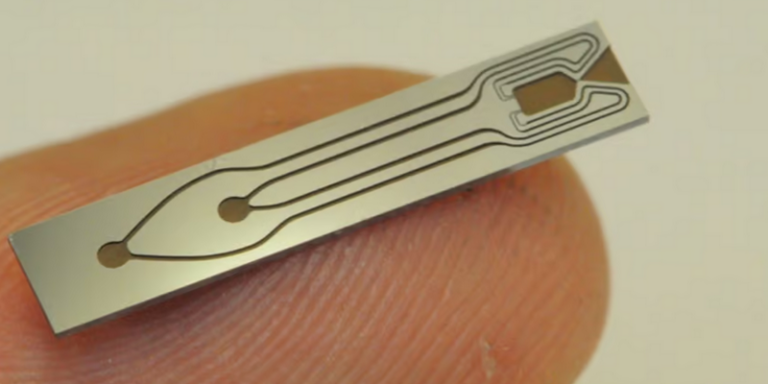Imperial College is developing a rocket thruster called the Iridium Catalysed Electrolysis CubeSat Thruster (ICE-Cube Thruster) that is so small that it can only be fabricated using techniques originally designed for making silicon chips.
With satellites weighing under 10 kg (22 lb) making up about 90% of today’s satellite launches and some of them not much larger than a smartphone, creating components for them is a major undertaking. One problem is coming up with rocket thrusters suitable to the limitations of CubeSats. These thrusters need not only be small, but also simple, unpressurized, low-power, and not include toxic materials.
Funded by ESA, the ICE-Cube Thruster certainly meets the small criteria. In fact, it’s tiny. The entire thruster chip is about the length of a fingernail, with the combustion chamber and nozzle only measuring 1 mm long. It also requires only 20 watts of electric current to operate and in a test campaign generated 1.25 millinewtons of thrust at a specific impulse of 185 seconds on a sustained basis. To put that into perspective, that’s half a billion times less thrust than the engines used on the Space Shuttle.
Continue here: New Atlas
Ask me anything
Explore related questions





